The air transport industry is not only a vital engine of global socio-economic growth, but it is also of vital importance as a catalyst for economic development. Not only does the industry create direct and indirect employment and support tourism and local businesses, but it also stimulates foreign investment and international trade.
Informed decision-making is the foundation upon which successful businesses are built. In a fast-growing industry like aviation, planners and investors require the most comprehensive, up-to-date, and reliable data. ICAO’s aviation data/statistics programme provides accurate, reliable and consistent aviation data so that States, international organizations, aviation industry, tourism and other stakeholders can:
- make better projections;
- control costs and risks;
- improve business valuations; and
- benchmark performance.
The UN recognized ICAO as the central agency responsible for the collection, analysis, publication, standardization, improvement and dissemination of statistics pertaining to civil aviation. Because of its status as a UN specialized agency, ICAO remains independent from outside influences and is committed to consistently offering comprehensive and objective data. Every month ICAO produces this Air Transport Monitor, a monthly snapshot and analysis of the economic and aviation indicators.
ECONOMIC DEVELOPMENT – April 2020
World Results and Analyses for February 2020
To download the PDF, click here.
Total Scheduled Services (Domestic and International)
![]()

Revenue Passenger-Kilometres – RPK
World passenger traffic grew by -14.1% YoY in February 2020, -16.5 percentage points lower than the growth in the previous month. This was the first shock from COVID-19 impact, primarily attributed to the drastic traffic drop in Asia/Pacific, specifically in China and its neighbouring countries. Over 80% of the domestic demand in China evaporated, and international traffic of the region also plummeted. With the outbreak intensifying and more countries imposing travel restrictions, the outlook for air traffic in the following month will further deteriorate.

International Traffic vs. Tourist Arrivals
International passenger traffic grew by -10.1% YoY in February 2020, -12.6 percentage points lower than the growth in the previous month. All regions, except for Europe and the Middle East, recorded contraction in international traffic with a slump in Asia/Pacific. Tourism is as well being hit hard by COVID-19, and the trend of international tourist arrivals* is anticipated to follow a similar trend.
![]()
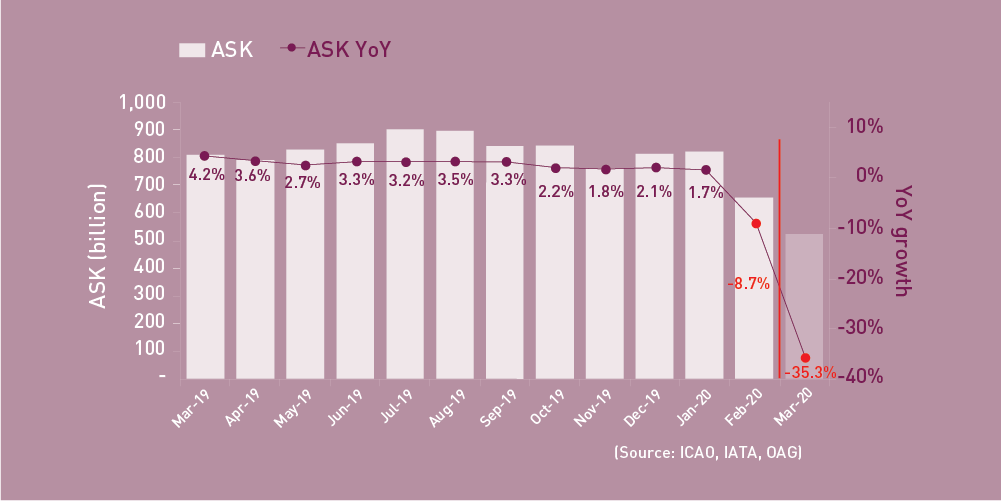
Available Seat-Kilometres – ASK
Capacity worldwide decreased by -8.7% YoY in February 2020, -10.4 percentage points lower than the growth in the previous month (+1.7%). With the growing spread of the COVID-19 outbreak, global capacity is expected to reduce by -35.3% in March 2020.
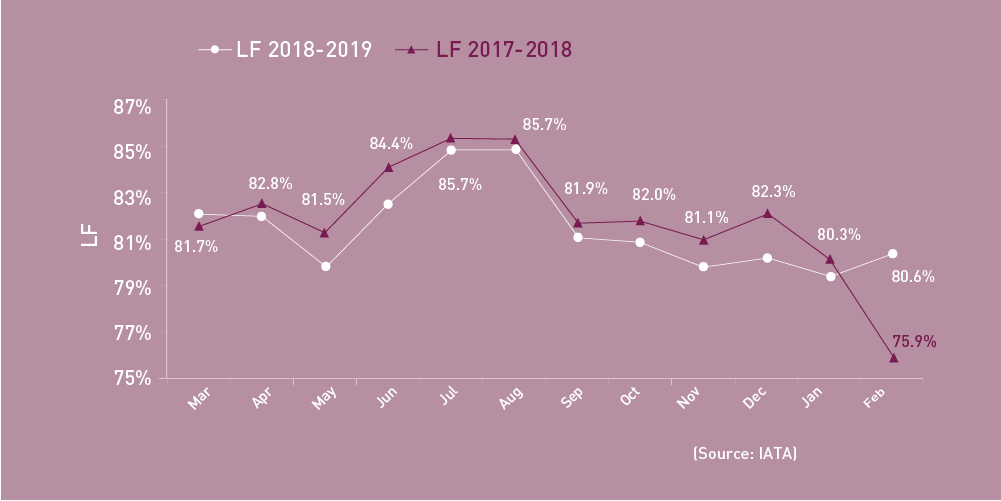
Load Factor
The passenger Load Factor reached 75.9% in February 2020, -4.4 percentage points lower than the previous month. As traffic decline outpaced the capacity reduction, the February LF was -4.7 percentage points lower compared to the rate in the same period of 2019.
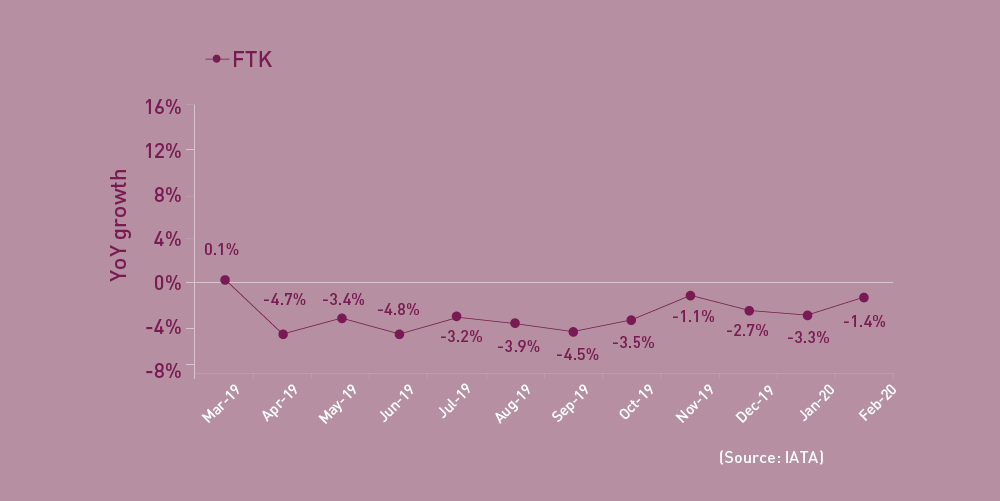
Freight Tonne-Kilometres – FTK
World freight traffic reported a decline of -1.4% YoY in February 2020, +1.9 percentage points higher than the fall in the previous month. The seemingly modest decline was owing to the comparison with the sluggish performance in the same period of last year. Airfreight demand has been, in fact, impacted heavily by factory shutdowns and supply chain disruptions led by the COVID-19 outbreak. Nevertheless, a decrease in air freight demand is expected to be less severe than in passenger traffic, mainly due to the increasing need for transporting medical supplies and other essential goods. The three regions accounting for over 80% of the world freight traffic, Asia/Pacific, Europe and North America, all reported declines.

February 2020: +5.8%, +0.8%, and +0.1% YoY in terms of aircraft departures, passengers and freight for theTop 15
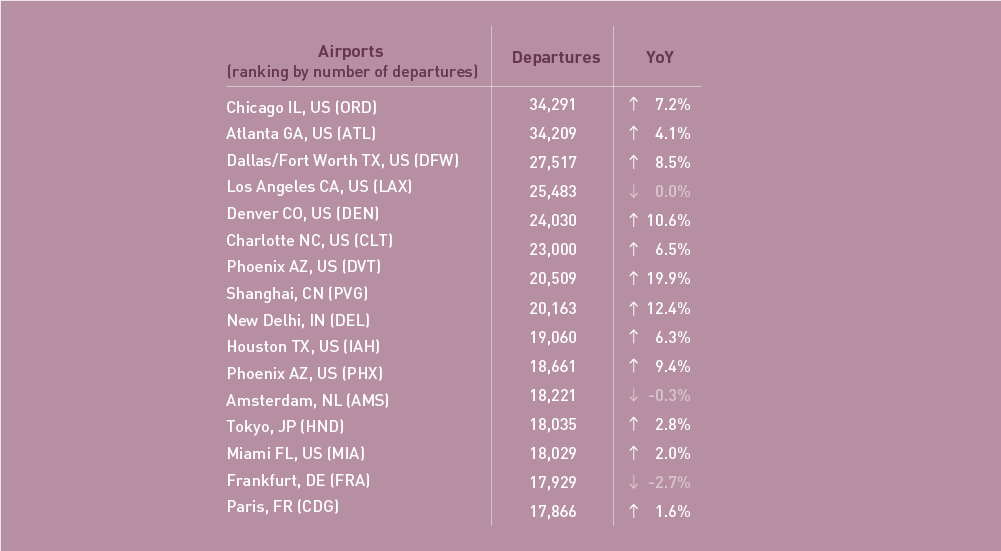
In terms of aircraft departures, the Top 15 airports reported a growth of +5.8% YoY. Due to the COVID-19 impact, major Chinese airports, i.e. Beijing, Shanghai and Guangzhou disappeared from the Top 15 ranking. Chicago ranked 1st with solid growth of +7.2%. Pheonix reported the most significant growth at +19.9% followed by New Delhi at +12.4%.
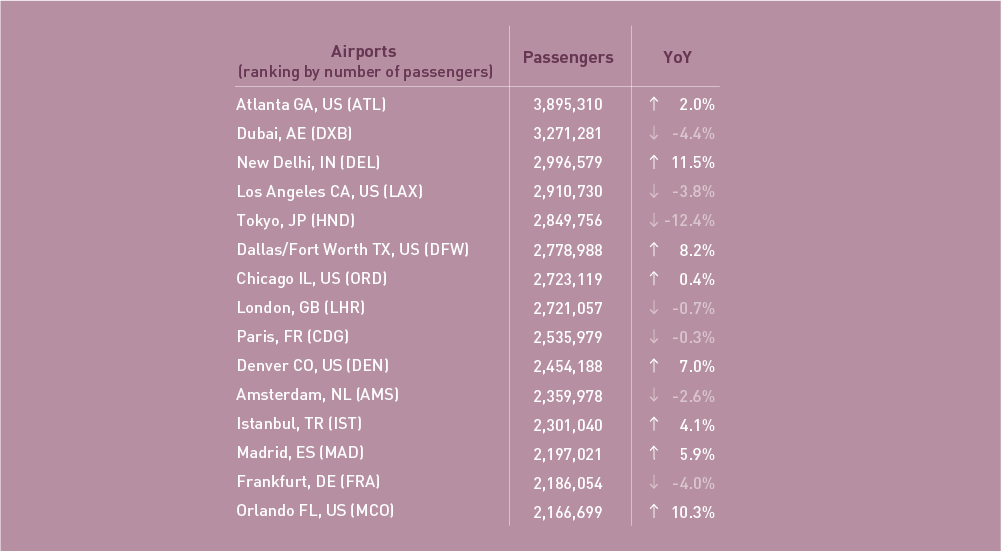
In terms of passengers, the Top 15 airports reported a growth of +0.8% YoY. Three Chinese airports, Beijing, Shanghai and Guangzhou saw drastic decline in passenger numbers and did not rank within Top 15. Atlanta remained at 1st with a modest growth of +2.0%. New Delhi ranked 3rd with the highest growth of +11.5%. Declines were observed in several major hubs with the sharpest fall in Tokyo at -12.4%.
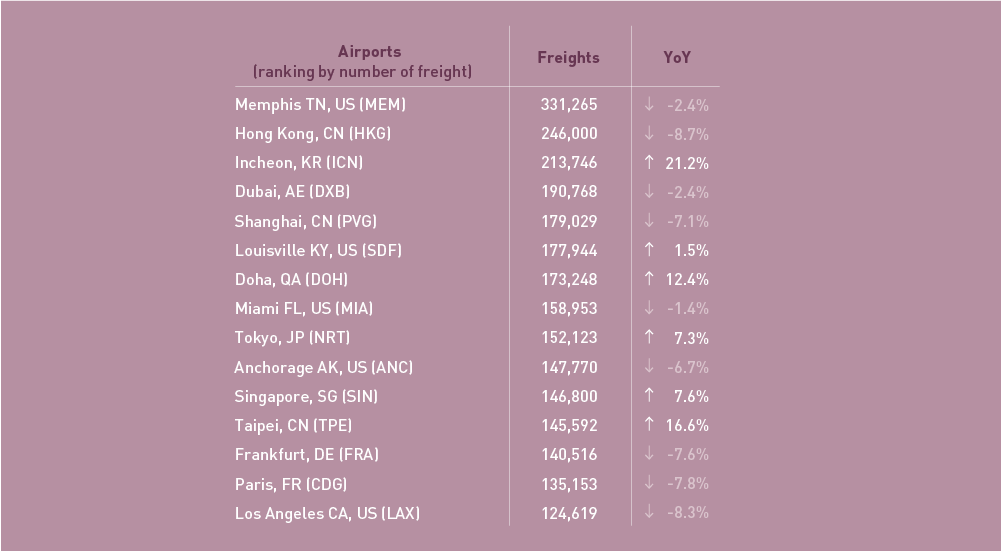
In terms of freight, the Top 15 airports reported a growth of +0.1% YoY. Similar to passenger traffic, Shanghai and Beijing did not appear in Top 15. Hong Kong recorded the most significant fall by -8.7%. Incheon, Taipei and Doha posted double-digit growth, mainly owing to the comparison with the weak outcome of a year ago.
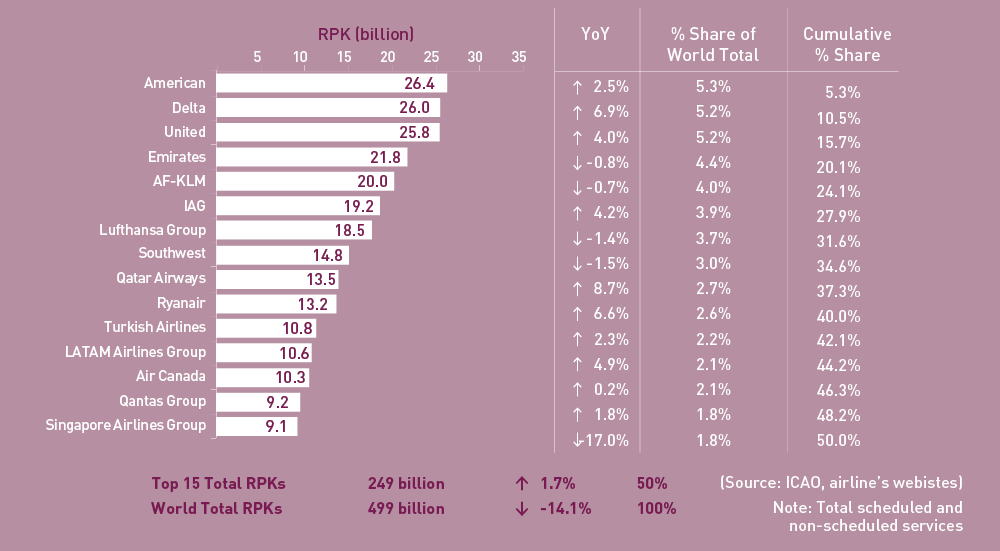 February 2020: +1.7% YoY in terms of RPK for the Top 15
February 2020: +1.7% YoY in terms of RPK for the Top 15
In terms of RPK, the Top 15 airline groups accounted for 50.0% of the world’s total RPK in February 2020 and grew by +1.7% YoY. This growth was +15.8 percentage points higher than the world’s average on scheduled services. Ranking of the Top 15 airlines started to show sign of distortion due to the impact of COVID-19 significantly weighed on airlines in Asia/Pacific.
American ranked 1st with a growth of +2.5%, followed by Delta and United with solid growth of +6.9% and +4.0%, respectively. Southwest declined by -1.5% albeit ranked up to 8th. Air Canada reported a marginal growth of +0.2% while securing a 13th position.
Emirates remained at 4th with a slim decline of -0.8%. Qatar Airways recorded the fastest growth among the Top 15 airlines at +8.7% and elevated 2 positions to 9th. Both AF-KLM and Lufthansa recorded a decline of -0.7% and -1.4% while remained at 5th and 7th. IAG lifted 2 positions to 6th with a growth of +4.2%. Ryanair recorded the third highest growth at +6.5% and went up 3 positions to 10th. Turkish Airways was up 4 positions to 11th with a growth of +2.3%.
Major Asia/Pacific airlines, especially the Chinese airlines suffered dreadful demand drop due to the COVID-19 outbreak and disappeared from the Top 15 ranking. Singapore Airlines ranked 15th with a sharp decline of -17.0%. LATAM and Qantas made it to the Top 15 with a modest growth of +4.9% and +1.8%, respectively.

Worldwide capacity expansion grew by -8.7% YoY in February 2020. The decline in world capacity was mostly driven by the drastic capacity reduction in Asia/Pacific amidst the COVID-19 outbreak. All other regions remained positive with Africa being the fastest expanding region albeit at a slower pace.
Global capacity is expected to further shrink with the spread of the outbreak in other regions.
Acronyms: ACI: Airports Council International; ASK: Available Seat-Kilometres; IATA: International Air Transport Association; FTK: Freight Tonne-Kilometres; LF: Passenger Load Factor;
OAG: Official Airline Guide; RPK: Revenue Passenger-Kilometres; UNWTO: World Tourism Organization; YoY: Year-on-year; YTD: Year-to-date.

